A Ninja Warrior-like obstacle course could soon come to the Olympics. I went on a test run, and it was as physically demanding as it looks.
Barnaby Lane

- Obstacle course racing is being tested as a replacement for show jumping in the Olympic sport modern pentathlon.
- I was the first reporter in the world to try the Ninja Warrior-like course.
Obstacle course racing could soon be at the Olympic Games.
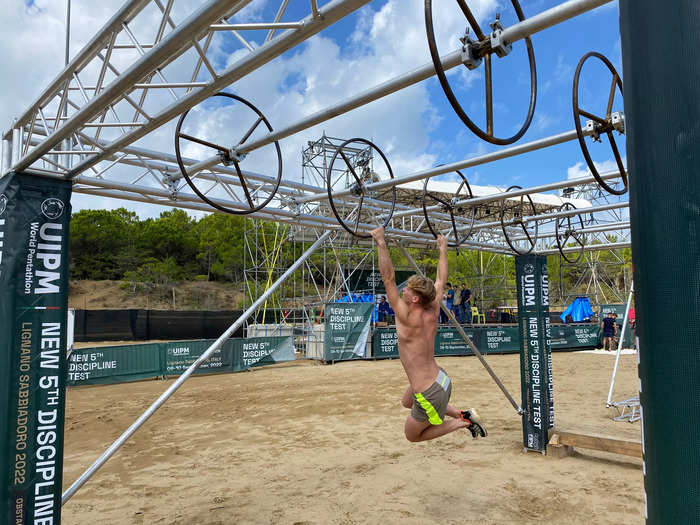
The sport is being tested as a new discipline within modern pentathlon.

Modern pentathlon is a multi-discipline sport that has been at every Olympic games since 1912.
Since the sport's inception, its five disciplines have been variations of fencing, freestyle swimming, pistol shooting, cross-country running, and equestrian show jumping.
That changed last year, however, when the sport's governing body, Union Internationale de Pentathlon Moderne (UIPM), said it was going to remove show jumping.
The decision came shortly after an incident at the Tokyo Olympics which saw a coach strike a horse that was not jumping, which was followed by reports of historical animal welfare neglect within the sport.
Following the decision to remove show jumping – which won't go into effect until after the 2024 Paris Games – modern pentathlon was cut from the preliminary list of sports to be included at the 2028 Olympic Games in Los Angeles.
In May, UIPM announced obstacle course racing would be tested as the sport's new fifth discipline, in place of show jumping, with hopes that it can help keep modern pentathlon's Olympic place.
I was the first reporter in the world to try it.
There have now been three test events for obstacle course racing in modern pentathlon – one in Ankara, Turkey; one in Manila, Philippines; and one in Lignano Sabbiadoro, Italy.
I attended the latter, where I was not only able to watch athletes from around the world run the course, but also try it myself.
The trial course consisted of 10 obstacles, including a giant "tsunami wall."
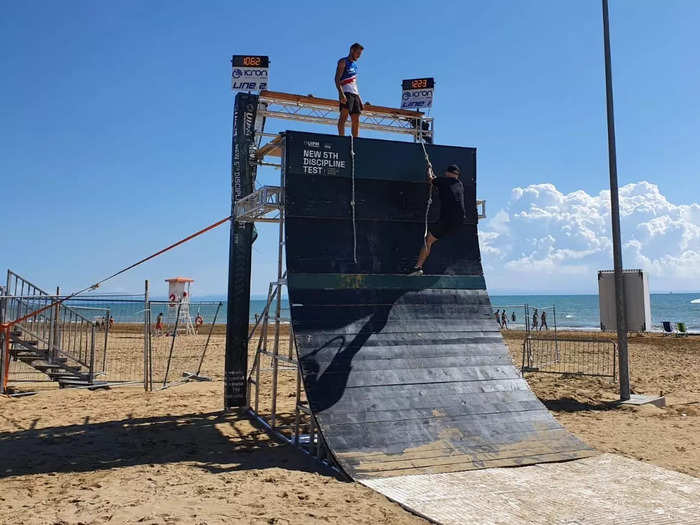
The first obstacle on the course was a handle-bar swing (or "wing nuts"), which required participants to swing from rope-to-rope using "V-shaped" handles.
Next up was a series of under-overs, followed by a spinning wheels rig, a balance beam, and monkey bars.
A cargo net climb and rope swing followed before the course finished with a 13-foot "tsunami wall."
The bespoke course was built in collaboration with World Obstacle (FISO) and the rights holder of the TV show, Ninja Warrior.
I started by watching a number of athletes go around the course.
The test event in Italy was running at the same time as the U-17 and U-19 Modern Pentathlon World Championships.
Young athletes from across the globe – including from Egypt, Brazil, France, England, China, and Ukraine – tried the course in the morning before entering a friendly competition in the evening.
Expert obstacle racers, some of whom had competed on Ninja Warrior, aided the athletes, teaching them the best techniques to complete each obstacle.
UIPM, the sport's governing body, had also organized for local children to come try out the course in the morning, which was a nice touch.
Before braving a go myself.
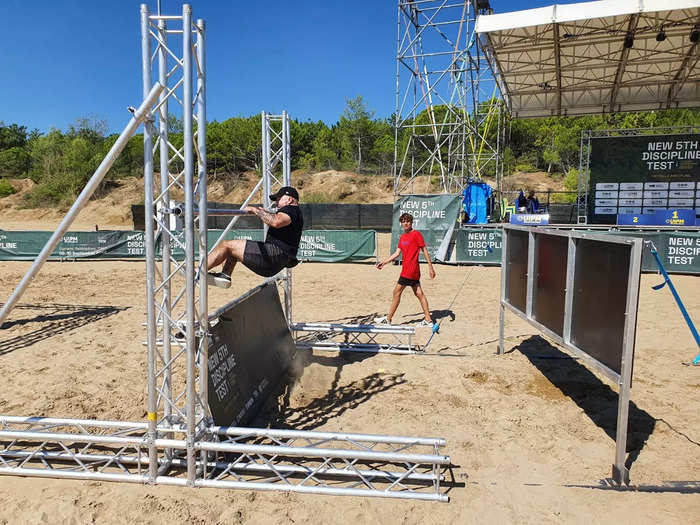
As much as watching the professionals do their thing was fun – I didn't travel all the way to Italy to stand and watch.
Donning my workout gear, I first joined in the morning practice session, where the expert obstacle racers took us through each obstacle and explained how to tackle it.
I was then asked if I'd like to run the course in its entirety and be timed. Feeling confident, not only did I say yes, I challenged a European Champion obstacle racer to a race.
Safe to say he beat me comprehensively, even if I did start 40 seconds before him.
Some parts of the course were manageable.
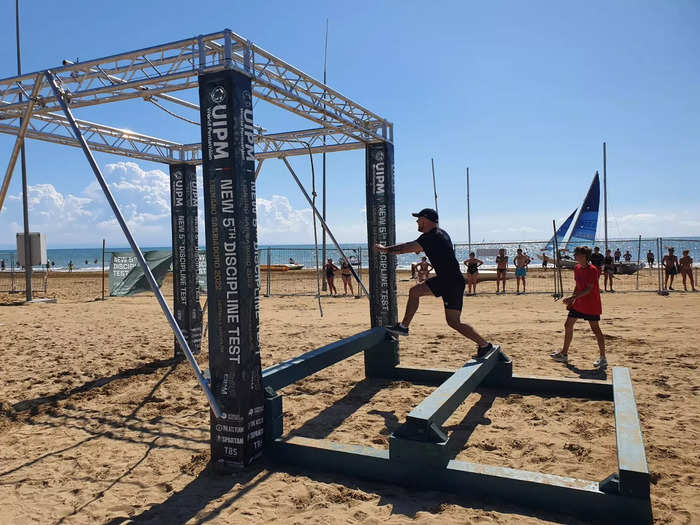
The under-overs, a balance beam, and net climb were all relatively easy. Almost everybody that tried the course managed them without any problem.
The monkey bars were not too difficult either, even if gripping them was a little tough on the hands.
Some parts were a little trickier.
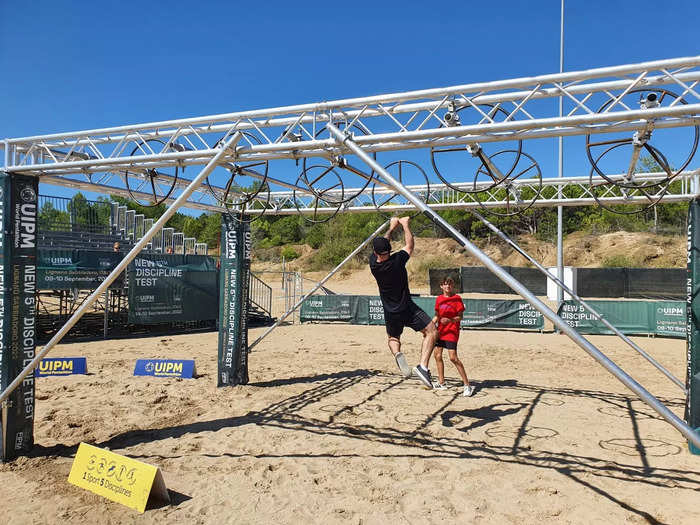
The spinning wheels rig wasn't easy – gripping moving obstacles while propelling yourself forward at the same time was a real challenge.
The tsunami wall was also a challenge. When I tried it on its own, I managed it easily. However, hoisting myself up a giant wall using a rope was much more difficult after completing all the other obstacles first.
While I still managed it, there were a number of young athletes who, understandably, didn't have the upper body strength.
One obstacle was very, very hard.
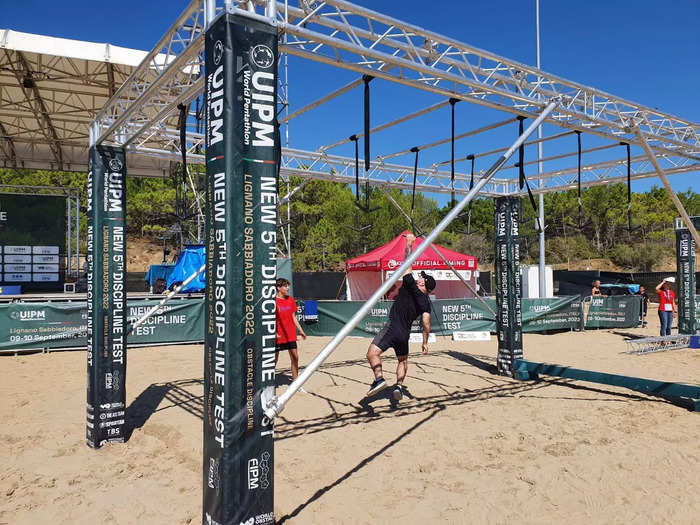
That damn handlebar swing — I just simply couldn't do it.
As was the case with the spinning wheels rig, gripping moving obstacles while propelling yourself forward was tough.
But the handle bars moved a lot more than the wheels, and if you lost your momentum even slightly it was game over. It was definitely the most strenuous exercise on both my hands and upper body too.
Technique, not strength, was the key here. Sadly, I had none.
It was a huge physical challenge, but was still lots of fun.
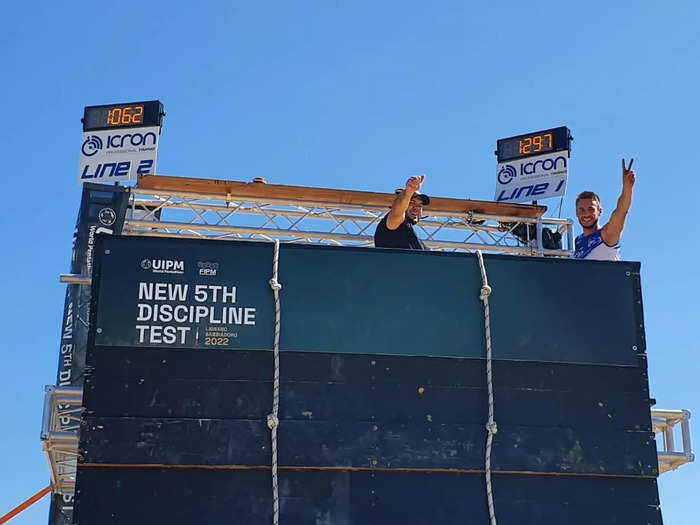
Most importantly, the young athletes really enjoyed it, even if it was hard on the hands.
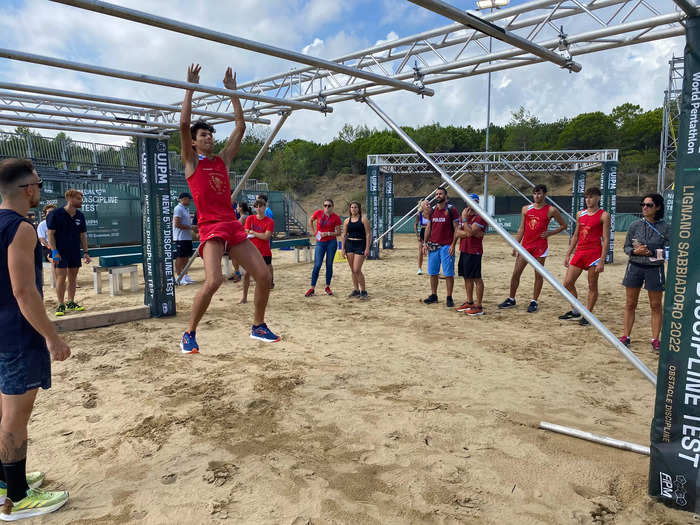
"I think it's really good," a young athlete from Hungary told Insider.
"I'd never done anything like it before," said an athlete from England. "I think it's a good thing for the future of the sport."
One youngster from Greece said: "I liked it. I felt like I was in one of those shows I'd seen on the TV."
The main complaint about the course was how difficult it was on the hands. A number of athletes had blisters that needed to be wrapped in bandages.
Asked about the hand injuries, a UIPM official said it had encouraged the athletes to "wear gloves" to prevent them, but admitted the discipline is still "a work in progress."
The spectators enjoyed it too.

Naturally, there were many parents and family members watching the friendly competition in the evening. But there was also plenty of locals who had turned up to see what was happening.
As I sat in the stands watching on, it was clear to see that the crowd was enjoying it, cheering on every athlete who ran and applauding both the winners and losers in true Olympic spirit.
I too was invested in the competition and found myself letting out a little cheer when a young lad from England set the best time.
Some modern pentathletes are really unhappy about the removal of show jumping.
When the decision to remove show jumping from modern pentathlon was made, more than 600 people within the sport signed a motion of no confidence against UIPM's leadership.
When the decision to make obstacle course racing show jumping's replacement was made, the backlash only intensified.
Pentathlon United, an independent representative body for modern pentathletes, is leading the charge to try to keep show jumping in the sport.
In a letter sent to the International Olympic Committee (IOC) in May, the group says that "over 95%" of modern pentathletes "are unhappy with the way that the UIPM conducted the change in the 5th discipline."
It also said in the letter that "over 77%" of athletes say "it's unlikely they will stay in the sport if the equestrian discipline is removed."
The current men's Olympic champion is among those who say they will quit.

"I don't have any intention of continuing the sport if the proposed changes go through," Joseph Choong, who won gold at the Tokyo Olympics, told Insider. "The entire process has shocked me the way that athletes matter so little in decision making processes in the sport.
"It's clear that a huge majority of active athletes don't want these changes, and yet it's been forced through anyway."
The sport's officials, however, are hoping obstacle racing can save modern pentathlon.

For LA 2028, the International Olympic Committee approved the inclusion of 28 sports, with skateboarding, sport climbing, and surfing all involved in a program it said "focuses on youth."
With that in mind, Alexandre França, Operations Director at UIPM, told Insider that UIPM believes making obstacle course racing modern pentathlon's newest discipline is the right decision if the sport is to keep its Olympic place.
"It's a huge challenge, for everyone who is involved," he said. "But we need to look to the future.
"We have a goal to be in the Olympic Games. Unfortunately, we needed to replace riding, and among the options we had, I'm sure this was the best."
Joël Bouzou, UIPM Vice President, told Insider that it's obstacle course racing's accessibility that made it the right replacement.
"If we want to remain an Olympic sport, we have to embrace all the continents or countries," he said.
"Obstacle course racing is accessible, it's not expensive, we can organize it everywhere. We are confident that it will work."
Popular Right Now
Popular Keywords
Advertisement